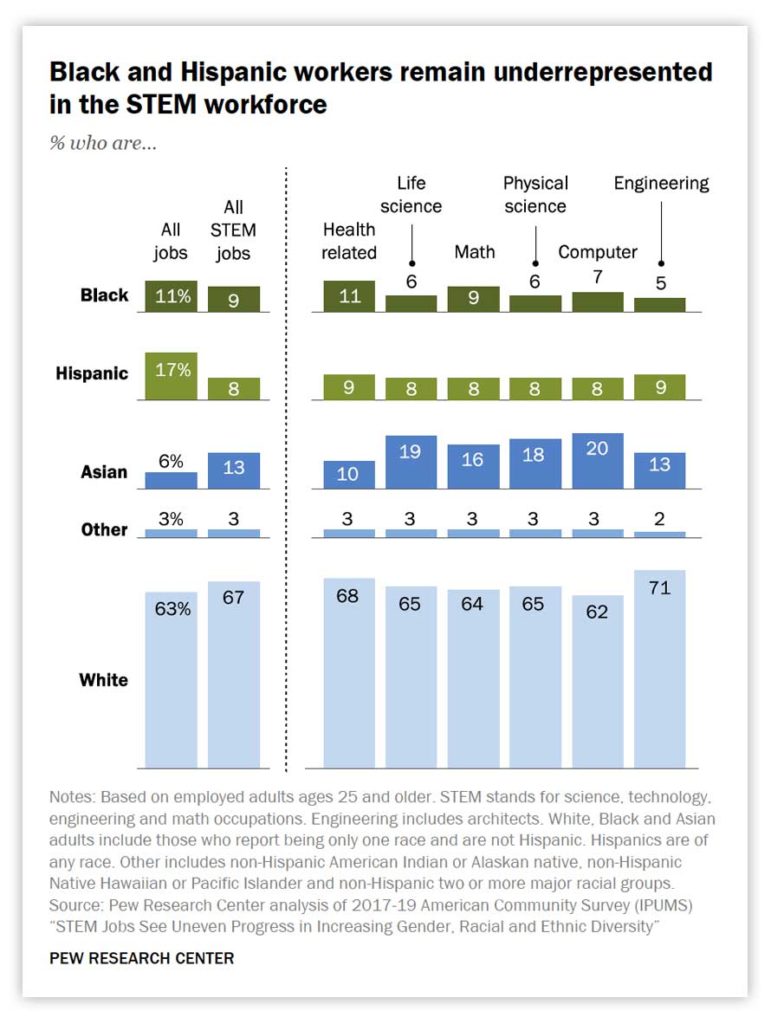The STEM workforce has seen considerable growth over the last few years yet Black and Hispanic workers continue to be underrepresented in STEM jobs. STEM jobs are readily available, but as a society we are still facing an uphill battle to expand minority representation in these jobs. Many studies have shown that STEM jobs are on target to quickly outpace non-STEM jobs in the coming years. It is essential to address the diversity gap in STEM workforce representation before it gets worse, and it all starts with the representation of Black teachers in our high schools.
An Issue of Representation: Black Teacher Shortage in the U.S.
High school students throughout the U.S. in low-income communities feel the effects of the Black teacher shortage. It’s especially clear when it comes to subjects like science, technology, engineering and mathematics. A lack of Black teachers and mentors in these subjects prevents Black students from seeing someone who looks like them in these roles, affecting the pipeline of minority students who later choose to pursue careers in the STEM field.
The root of the problem can be traced back to the job path that STEM professionals choose after graduation. In 2019, the New Jersey Center for Teaching and Learning conducted a study and found that many STEM professionals will choose a higher paying career path post- graduation and may not consider teaching as an option. This is especially true for Black graduates who feel the crushing pressure to pay off disproportionately high levels of student loan debt compared to their white peers.
In an effort to promote higher minority matriculation into STEM fields, the New Jersey Center for Teaching and Learning created a program that provides resources and training materials to retrain current teachers on STEM subjects to fill vacancies across the country, particularly within underserved communities.
“If the teacher shortage isn’t meaningfully addressed… things will continue as they have been, affluent kids will have access to these nice career paths and poor and minority students won’t.”
-Bob Goodman, Director of the New Jersey Center for Teaching and Learning
Current STEM Workforce Demographics
According to data from the Pew Research Center, the STEM workforce today consists of mostly white workers with little to no representation from Blacks and Hispanics. In fact, white workers account for over 60% of the overall STEM workforce with Blacks and Hispanics making up less than 10% of the workforce. This lack of diversity goes back to the shortage of Black teachers affecting Black students’ progression within the STEM field.

Addressing this Gap in STEM Education
With STEM jobs growing faster than ever before, it’s important that Black and Hispanic students get the same chance as their white counterparts. There are many initiatives working towards addressing this gap in education, such as Student Freedom Initiative, conceived by Robert F. Smith. The initiative’s student-focused programs provide assistance to Black students who are enrolled in STEM majors at participating HBCUs, in the hopes that they can enter into STEM careers, including teaching, after graduation.
Learn more about Smith’s philanthropy and programs like Student Freedom Initiative that are designed to support future generations of Black college graduates.
